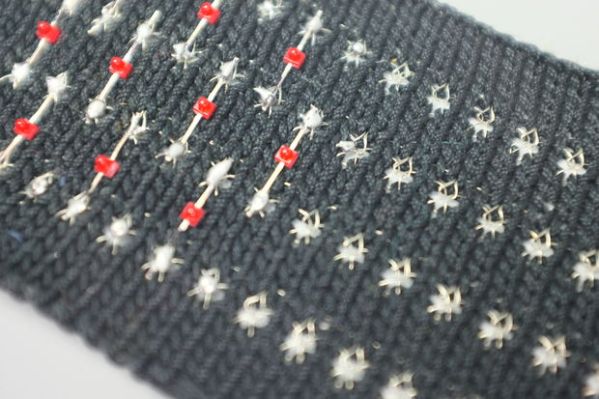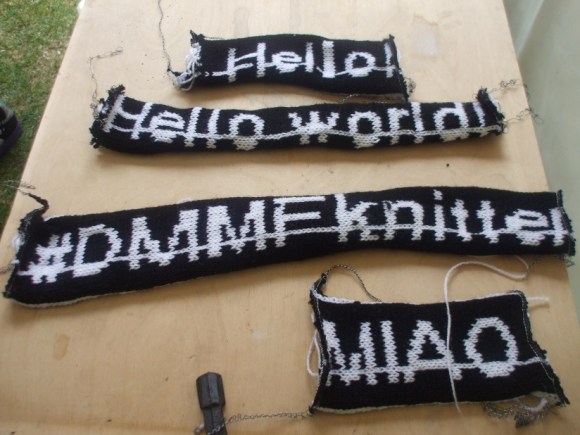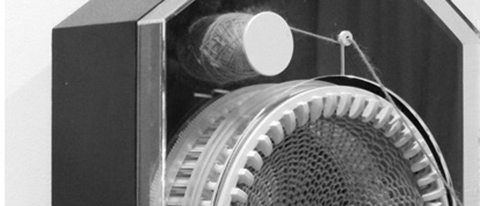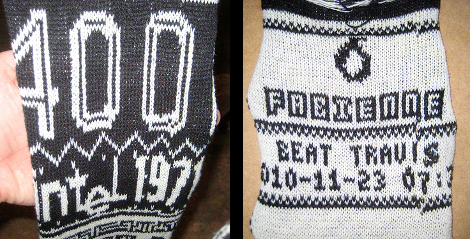What could be better than sewing a circuit into wearable fabric? How about rolling your own circuit-ready knits? Chicago-based artist and assistant professor [Jesse] has done just that by perfecting a method for knitting solderable circuit boards.
This can be done by hand or with a knitting machine. The basic idea is that 2-3 strands of 34-36AWG bus wire are knitted into mercerized cotton yarn in rows, mimicking a piece of stripboard. Once the knitting is blocked and the component layout chosen, the floating bus wire strands between the rows are cut as you would cut unneeded stripboard traces. When it’s all done, [Jesse] used iron-on backing to protect her skin from scratches and lead transfer.
Her tutorial covers a simple LED circuit with a battery and a sliding switch, though she describes in detail how this can be expanded for more complex circuitry and offers good suggestions for working with different components. She also advocates feeding the bus wire from a spool rack to maintain tension and recommends stretching a piece of nylon stocking over the spool to keep it from unfurling all over the place.
This is the most aesthetically appealing e-textile work we’ve seen since this electro-embroidery piece or this blinky LED necklace, and it’s fascinating to watch the e-textile world unfold. Watch [Jesse]’s short videos after the break where she demonstrates a simple blinky knit as well as a lovely pulsing heart collar.
Continue reading “Knitted Circuit Board Lends Flexibility To E-Textiles”






















